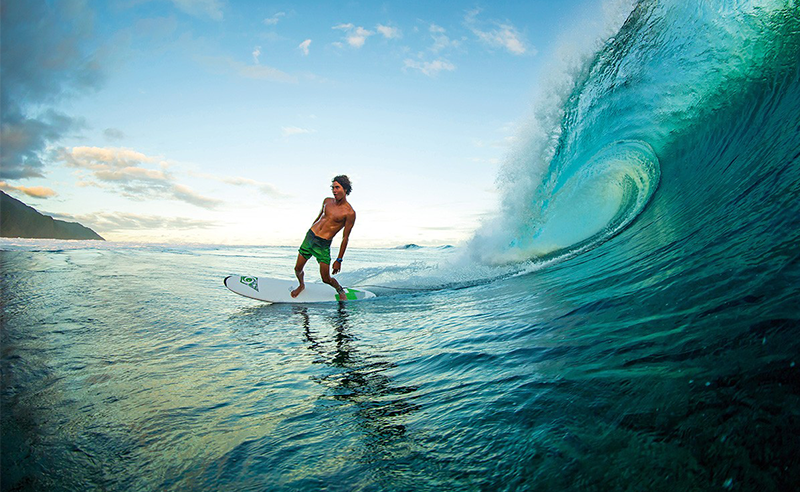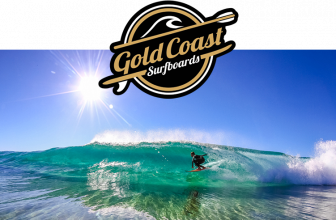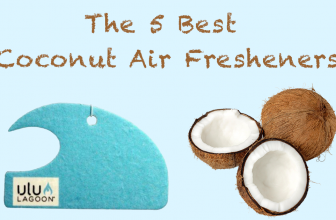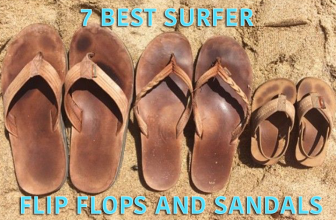
Egg surfboards, unlike most surfboards, have an actual inception date.
Back in 1971, G&S Surfboards was one of the most popular surfboard manufacturers in the Southern California area.
More...
One of their main shapers, Skip Frye, who is now one of the bigger legends of surfing, created what they dubbed the “Egg”.
These groovy little yellow and white boards were incredibly fast, lightweight, and just as maneuverable as shortboards.
How Did These Boards Become So Popular?
Egg surfboards became a great alternative to shortboards for surfers who wanted to surf larger waves. The name was given to them because of their rounded outline and nose that had an “egg” shape.
They was especially a great transitional boards for surfers who were just getting comfortable riding bigger waves, though felt like they still needed training wheel with balance. It helped that the design largely caught on with tons of different shapers and companies.
Bonzer, another very popular surfing company and board type in the 70s, reflected many aspects of the Egg board as well. It wasn’t long before surfers all around Southern California were riding eggs.
So What Exactly Is An Egg Surfboard?
Egg surfboards share a lot of the same characteristics as longboards and shortboards. Many people expect to see a board that looks just like an egg when they see them for the first time, though they aren’t as ovular as you might think. That being said, they definitely have the same surface area characteristics as longboards, as well as thickness and width that are pretty relative to longboards when you compare their sizes.
The biggest egg characteristics are the rounded rails. More than any other boards out there, eggs have soft rails that gives them away at first glance. Most of the time, you’ll find these bad boys between 6’-8’ long.

Why Did Egg Surfboards Catch On?
Egg surfboards caught on because they gave surfers a different feel in bigger conditions. Unlike shortboards, which required a lot of pumping and had bigger rockers that sat surfers in the pocket, eggs provided more of a gliding sensation with more juice. You could race out of high lines and still have the same maneuverability when it came time curve.
For groms, they were a great alternative to longboards. They provided enough width and stability to ride without the weight and length of 10-footer that most little surfers would find impossible to lug around.
Why Should I add an Egg Surfboard to my Quiver?
Eggs provide different advantages to different levels of surfers.
For beginner surfers, trying to balance and catch waves on a shortboard can be extremely frustrating. Egg surfboards have become popular with beginners because the width provides stability. Though they aren’t best suited for small waves, which most beginners learn on, they can still provide that balance while giving newbies maneuverability as they progress.
For advanced surfers, they’re easy to use and are dependable when you want to just glide around for the day. Even with their small size, they have the feel of a longboard. Classic riders absolutely love that.
Frequently Asked Questions
How have eggs evolved from their original design?
One of the most popular eggs out there is the Bonzer egg. This egg has almost become the standard for many egg shapers out there. Unlike the twin fin and 2+1 design that was popular in the 1970s, many egg shapers have begun using 5-fin setups. Because they are made with a very shallow rocker, this gives them more stability.
Final Thoughts
Egg surfboards are best for surfers who are just looking to have a little bit of fun gliding around and don’t care too much about having the performance or maneuverability of a shortboard. There’s a reason why so many people refer to them as “mini longboards”. They have such a similar feel and responsiveness to the waves. Eggs continue to evolve and adjust to maintain their relevance, and we don’t see them going out of style anytime soon.




